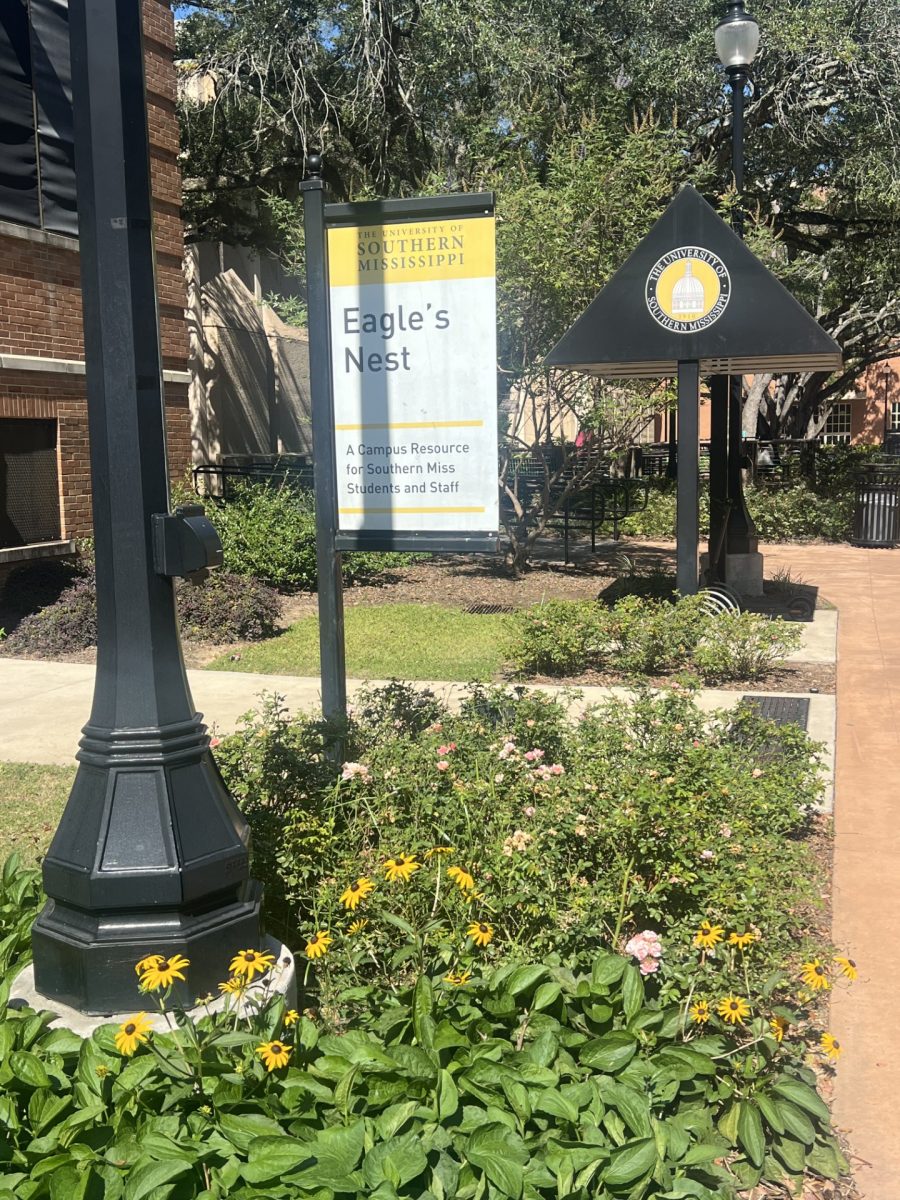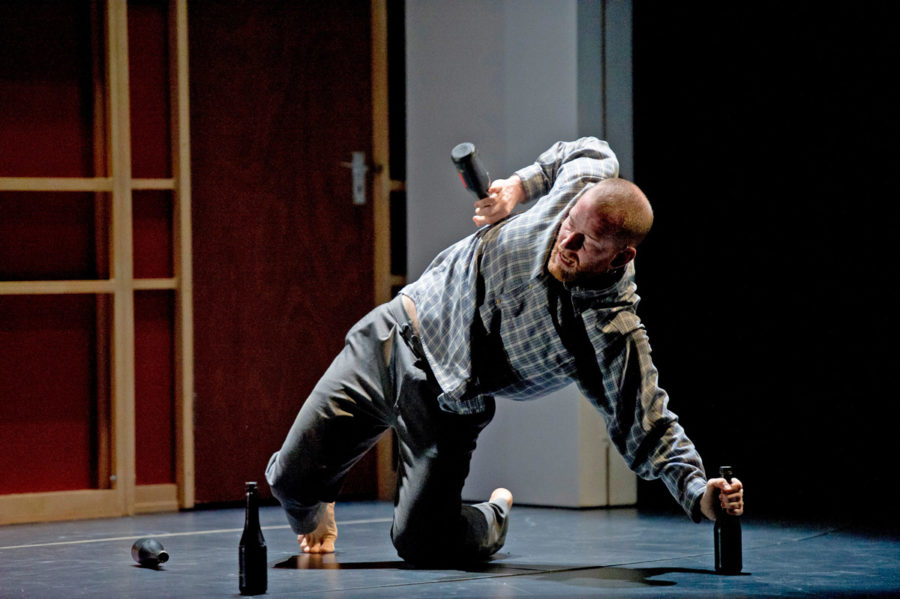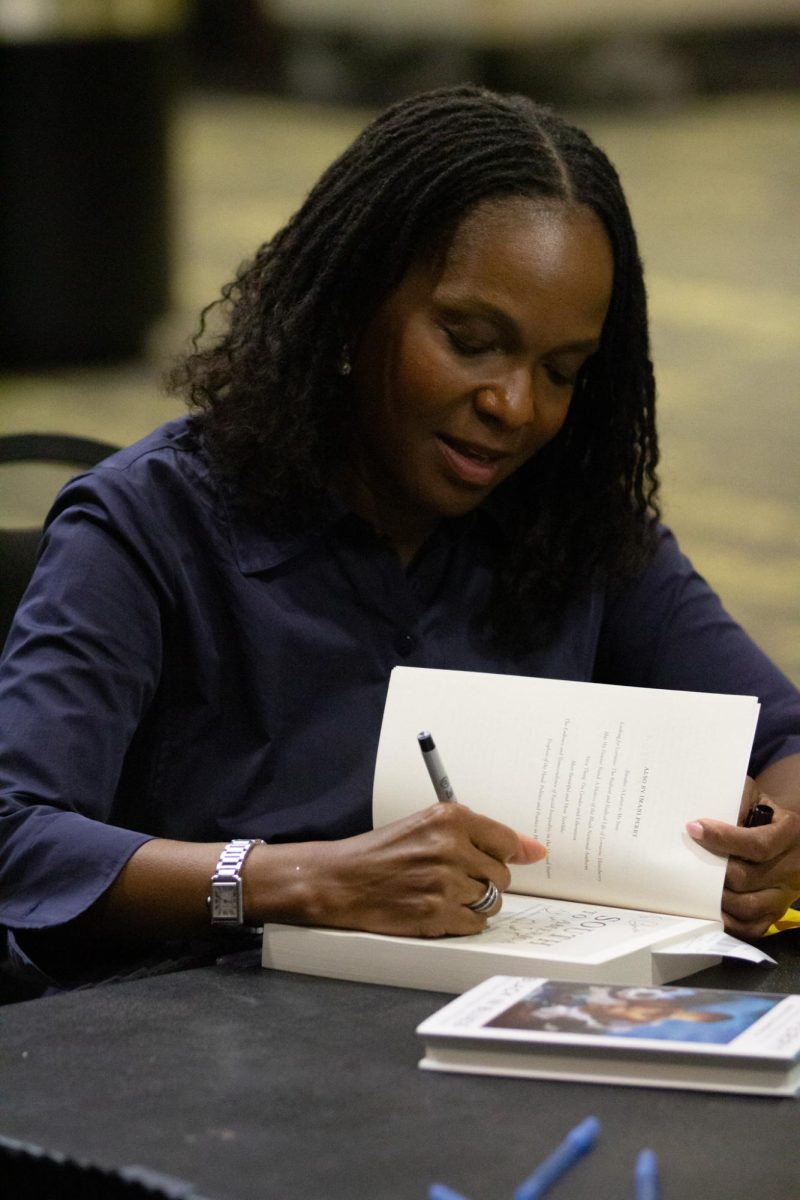Courtesy photo from Southern Miss Theatre Broadcasts Britain’s National Theatre
A man and woman step through an open door, faces darkened by the surreal consequences of a real world, and take their seats in front of a television. Then it all begins; John’s narration scorches the air with the electricity of nuance.
Presented by National Theatre Live, eccentric drama “John” was screened on Tuesday and Wednesday night in Martha Tatum Theatre. The production, directed by Lloyd Newman, was created by the much celebrated dance theatre group DV8 Physical Theatre, whose previous works have amassed over 50 prestigious awards internationally.
“John” has seen a positive to mixed reception but is noted for its impressive assimilation of dance and storytelling. The production began screening in cinemas on December 9.
When the crowd of 20 or so shuffled into the otherwise empty auditorium before Tuesday’s showing, they likely didn’t expect what “John” was about to deal them.
The monologue of the play’s first half is explosive. Titular character John, interpreted by Hannes Langolf, pulls the onlookers through a kaleidoscope of tragedy and abuse, touching on memories of thievery, sexual violence, and dead family members—all in the first five minutes.
The images, woven throughout a constantly turning stage, are supplemented heavily by winding, sinuous choreography that borders the literary; every twist of the abdomen is a sentence not spoken, and every twitch of the shoulders is a projection of emotion. Langolf delivers it as it is—raw, empathetic, and covered in dirt. It’s a psychological walkabout with devastation around each slow-spinning wall.
The atmosphere loosens in the latter half, however, as the focus moves from John’s high-octane early life to his desire to find love and partnership. The wheel of narration ceases, and nameless supporting characters supply steady-streaming details of life at a gay sauna, wherein John seeks the attention of men who are only there for sex. At this point, whatever air has been drained from the theater has flooded back in, leaving much to be desired in payoff.
But the lull doesn’t stop. More tireless monologue from John fails to stir emotion or do the production any further justice. There is a keen lack in exploration of the story being told, which is understandably due to the script being pieced together from various real-life interviews of John—an actual person—and others.
However unique and artistic the piece is as a whole, it falls in on itself by disappearing down its own mouth.
The finale itself is yet another curt set of lines, the drawing of the curtains, and a big “What?” from the audience members. Abrupt and unforeseen, the conclusion ties no loose ends, even with the production having the convenience of focusing solely on John. It’s as if the performance is saying to its audience, “Okay, that’s all. Get out of here.”
The merit isn’t completely lost on me, though; the script is a verbatim conveyance of several different interviews, as previously mentioned, and the play seems to intentionally limit itself to being a mere portrait of a man as opposed to a formulaic narrative. Either way, inventive doesn’t necessarily mean overly engaging.
“John” is rocket-fueled in its first half, free of form and care for what judgmental viewers might think. But the final pieces of the play knock together clumsily in its final parts, despite the grace and fluidity carried by its masterful choreography.
It is thoughtful and literary, but ultimately less so when observed as the sum of its parts.






























